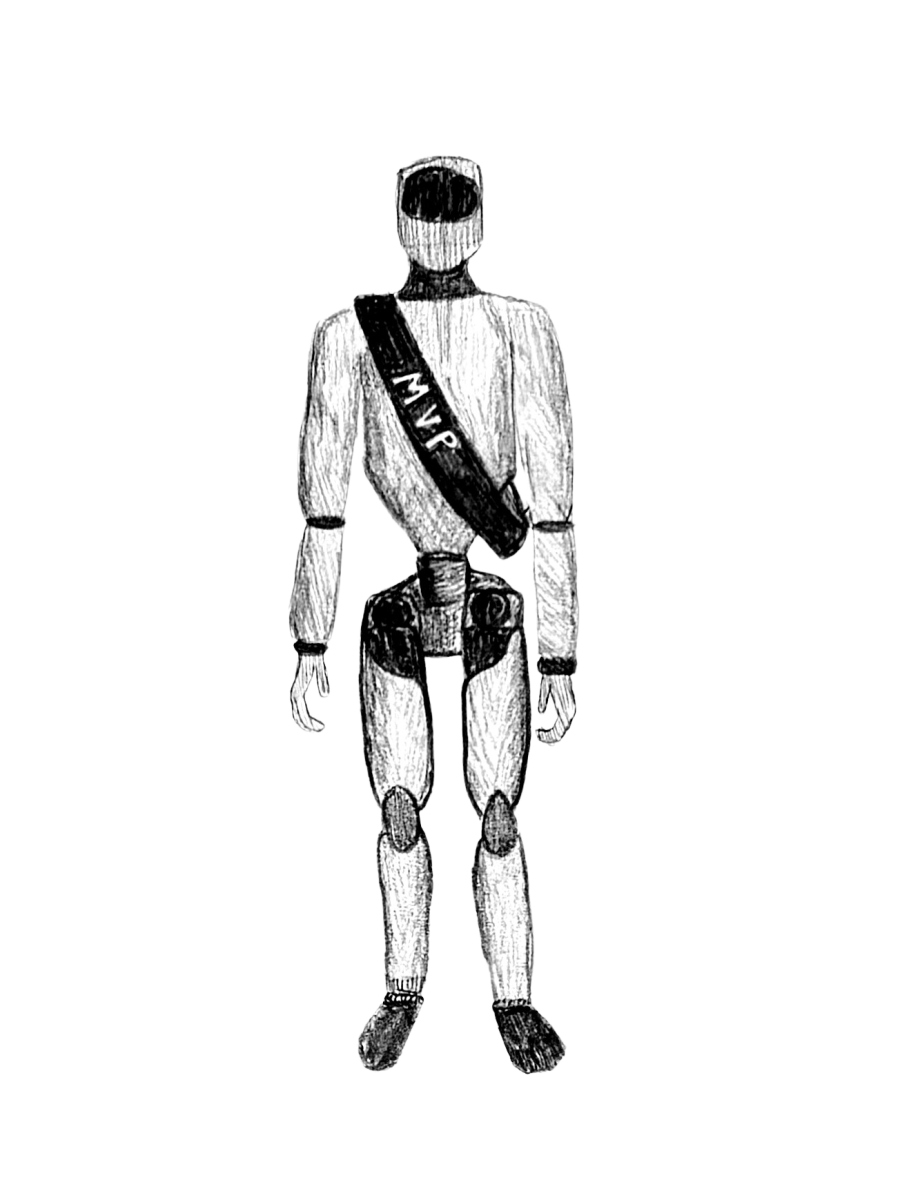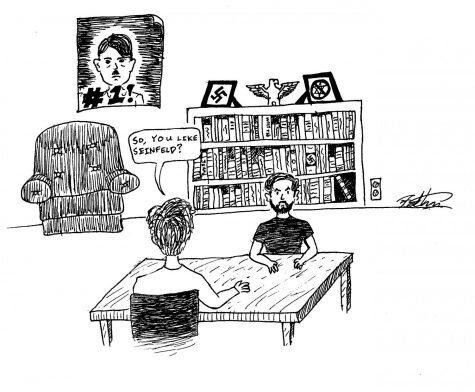A voice that needs to be heard, if not listened to.
Eileen MacDonald, Staff Reporter
Originally published January 11, 2018
Last election season, The New York Times published an article about the “white picket fence” all-American life of Tony Hovator, a 25-year-old recently married man from Ohio, who just so happens to be a Nazi sympathizer.
According to the article, entitled “A Voice of Hatred in America’s Heartland,” Hovator, as a member of the Traditionalist Worker Party, holds staunchly fascist beliefs about the rights of white Americans, and has attended many rallies supporting White supremacy.
Although it goes somewhat into detail about his politics, what the article truly emphasizes is how normal he is. He makes himself sandwiches and watches Seinfeld, and lives the classic “Leave it to Beaver” life. This naturally, is not what most people expect from a piece written about a man who believes the races are better off separate, but there it is.
Within moments, there was an online upheaval of readers outraged at the casual profile, claiming it “normalized” a Nazi and his beliefs, which to many are far from ordinary. Upon reading the letter from the editor, however, it is apparent that the intention was to do just that, not in the form of a casual feature, but as a warning.
Iz MacMurchie, sophomore, is a member of STAR club (Students and Teachers Against Racism). Initially after reading the article, she was skeptical of the necessity for a piece giving a voice to a white nationalist when there could instead be one from a more liberal perspective. Upon a second reading, however, she saw why voices like Hovators must be heard.
“In my peer group, republicans consisted mainly of future business-people, good Samaritans and ethical decision makers, but among them sat white nationalists and neonazis. I grew up hearing these fascist and bigoted views in my classrooms, and stories like that of Tony Hovater were the stories of my peers and their families,” MacMurchie said in an e-mail response. “Citizens of cities like New York and Seattle, to no fault of their own, are somewhat shielded from seeing the daily lives of hateful fascists, and this article begins to open that world.”
In a report released by the FBI, it has been observed that since Trump’s election in 2016, the number of hate crimes in America has reached a five-year high, and a near 5 percent increase since 2015. Under the current administration, more than ever we must recognize the strong presence of the far-right perspective. That does not mean that we must appreciate it or respect it, but we must acknowledge it or the culture of hate will never change.
“These hateful views are held not by ghosts or inanimate objects, but by human beings. They sit next to us on buses, in classrooms and walk past us on the street. They have families, friends and foes all their own,” MacMurchie said.
Ignorance is the plague that truly divides our country, whether it be intentional or oblivious. The Times’ purpose was to remind the public that not everyone is on the side of acceptance, and that the populations of groups such as the Traditionalist Worker Party are steadily growing, aided by the intermittent storms and sunny days that describe our volatile political climate. They feed on misunderstanding and the loss of credibility that comes from passionate displays of liberal justice, and as a result are able to portray themselves as the classic American patriots, exemplified in Hovator.
“The personalization of white nationalism and overt racism is dangerous, because it equalizes hate with peaceful protest. That being said, understanding where these views come from and the people that voice them is the first step to a societal acceptance of xenophobia in general,” MacMurchie said.
The original article might hit on the relatability of Hovator too hard without acknowledging directly how the normalization is a problem, but maybe it is good thing that it was written in such a way. The fact that there was such an intense response to the piece means that people do care about this issue, even if they don’t understand it in all of its complexity. The piece started a dialogue, and at the end of the day that is exactly what we need.
Ignorance is the plague that truly divides our country. The Times’ purpose was to remind the public that not everyone is on the side of acceptance.[/pullquote]“I am a firm believer that knowledge is the key to peace, and that education will end xenophobia,” MacMurchie said. “Take the time to talk to those with views not differing from yours, but opposing yours directly. While there is a clear right and wrong on this issue, fighting will only end in further breakage and separation. Only on this individual level of communication does awareness reach those who seek it or need it.”
STAR club is dedicated to providing opportunities for that kind of communication, but it’s not just members of STAR who can begin those tough conversations. We all grow up in different environments, come from different backgrounds, and have different beliefs. Everyone has the power to educate themselves, starting with a simple “hello.”

























